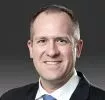On January 19, 2023, the U.S. Patent and Trademark Office (USPTO) and Food and Drug Administration (FDA) held a "listening session" focusing on USPTO-FDA collaboration initiatives proposed pursuant to President Biden's Executive Order on "Promoting Competition in the American Economy" to "promote greater access to medicines for American families." Participants shared their perspectives on how the U.S. patent system could be improved to foster innovation and provide affordable access to medicines.
The program included five sessions covering Patient Perspectives, Examiner Training on Publicly Available FDA Resources, Applicant Statements Made to the USPTO and FDA, Patenting Practices in the Pharmaceutical Sector, and Patent Term Extension and Patent Use Codes. The perspectives offered by various commenters generally fell into three broad categories focused on patient perspectives, academic policy recommendations, and pharmaceutical industry interests, which are summarized below.
The Patient View
Various patient advocacy groups representing patients dealing with chronic illnesses advocated for more direct access to and communication with the USPTO, and for greater involvement in the patent term extension process.
Leslie Ritter of the National Multiple Sclerosis Society stated the importance of improving USPTO-FDA communication during patent examination. Ms. Ritter also proposed eliminating the practice of terminal disclaimers. Sneha Dave of Generation Patient proposed creating a patient advisory committee at the USPTO to improve patient stakeholder input. To promote participation, Ms. Dave indicated that it would be important to compensate patient members of this proposed committee for their time. Along these lines, Emmabella Rudd encouraged the USPTO to "invite third party participation in the extension process, including participation by patient groups" to help curb "evergreening" and ensure that generics are able to be launched as quickly as possible.
Kevin Wren of T1International advocated for more training, resources, and examination time for patent examiners. Sarah Bourland of Patients for Affordable Drugs suggested that innovations related to FDA-required processes or protocols, such as risk evaluation and mitigation strategy, should not be eligible for patents.
The Academia View
Numerous academic commenters offered various policy recommendations covering patent term extensions, practices surrounding Orange Book patent listings and use codes, USPTO continuation practice, and terminal disclaimers.
Prof. John R. Thomas of Georgetown Law focused his remarks on Orange Book patent listings, calling for greater FDA oversight and review of submitted patents to determine compliance with statutory requirements. Prof. Thomas also advocated USPTO involvement in Orange Book patent review, encouraging legislation creating "Orange Book Listing Review (OBLR)" proceedings to be conducted by the PTAB in which APJs would review patent claims alongside the specification of an approved New Drug Application. Regarding use code reform, Prof. Thomas suggested that FDA "should read the claims of issued patents as the USPTO granted them, not in a summary" provided by brand-name drug companies, enlisting the USPTO's expertise to do so, if necessary.
Prof. Robin Feldman, of UC College of the Law focused on statements pharmaceutical companies make to FDA and the USPTO. Prof. Feldman stated that a "company should not be able to tell the FDA, 'This drug product is the same as what has come before, so no further testing is required,' and then tell the PTO that the product is entirely new." In addition, Prof. Feldman proposed that "if the FDA isn't convinced by the clinical data, then the data shouldn't be the basis for a patent claim."
Prof. Sean Tu of West Virginia University College of Law focused his discussion on patent thickets, which he defined as a "whole lot of patents directed to the same product." Prof. Tu identified "misuse" of continuation practice as one of the mechanisms behind "thicketing" around pharmaceutical products. Prof. Tu offered various possible solutions, such as requiring applicants to identify their patents as potential Orange Book patents, having those patents examined by a special art unit that uses a team examination approach with added support, limiting patent applications to two continuations, and eliminating terminal disclaimers in favor of requiring the applicant-patentee to argue for patentability of continuation claims vis-à-vis parent application claims.
Prof. Adam Mossoff of George Mason University Antonin Scalia Law School questioned the validity of certain data underlying current pharmaceutical patent policy debates. In particular, Prof. Mossoff highlighted discrepancies between patent-per-drug numbers reported by Initiative for Medicines, Access & Knowledge (I-MAK), and the number of patents listed in the Orange Book or asserted in patent litigation for a given drug. For example, he notes that I-MAK asserted that 68 patents cover the drug Lyrica, while only three patents are listed in the Orange Book. Prof. Mossoff supported data-driven policy decisions, but emphasized that all underlying data should be reliable in both form and substance in order to ensure "evidence-based policymaking, and not policy-based evidence-making."
The Industry View
Several pharmaceutical industry representatives questioned the negative rhetoric surrounding patent protection for biopharmaceutical innovations, and advocated for intellectual property protections and regulatory frameworks which foster continued innovation.
David Korn of PhRMA noted that despite concerns voiced by several commenters, there was no clear evidence of widespread inconsistent statements being made to FDA versus the USPTO. On the other hand, he raised concerns that increased information-sharing between agencies could put trade secrets and highly confidential commercial information at risk. Mr. Korn also indicated that post-approval innovation, such as new dosage forms and routes of administration, benefit patients and public health and so should be incentivized by the patent system, rather than discouraged by restrictions on continuation applications or terminal disclaimers.
Disputing "patent thicket" allegations, Corey Salsberg of Novartis provided examples of legitimate uses of patents to protect post-launch inventions, such as azidothymidine (AZT), a failed cancer treatment candidate later approved to treat HIV. Mr. Salsberg also addressed what he deemed inaccurate allegations of unfair and systemic delays to generic entry, noting in particular that although the cancer medication Gleevec® was alleged to have a patent duration of 35 years, in practice it only had 15 years on the U.S. market without generic competition.
Azeen James of Fresenius Kabi presented a different viewpoint, providing examples of ancillary patents issued for drug properties such as the glycan profile, charge profile, variants profile, impurity profile, immunochemical properties, and functional activities. Mrs. James proposed that FDA should provide guidance documents and drug regulatory dossier extracts to the USPTO that can serve as prior art against ancillary patents, and suggested that patents tied together with terminal disclaimers should rise and fall together in patent challenges (e.g., in Inter Partes Review proceedings).
What's Next?
Written comments on the USPTO-FDA collaboration initiatives can be submitted until February 6, 2023, through the Federal eRulemaking Portal at www.regulations.gov under docket number PTO-P-2022-0037. Additionally, on Thursday, February 23, 2023, at 3-4 p.m. EST, the USPTO will host a virtual panel discussion on the duty of disclosure and duty of reasonable inquiry, to answer questions surrounding materials or statements material to patentability, or statements made to the USPTO that are inconsistent with statements submitted to the FDA and other governmental agencies.
The content of this article is intended to provide a general guide to the subject matter. Specialist advice should be sought about your specific circumstances.



